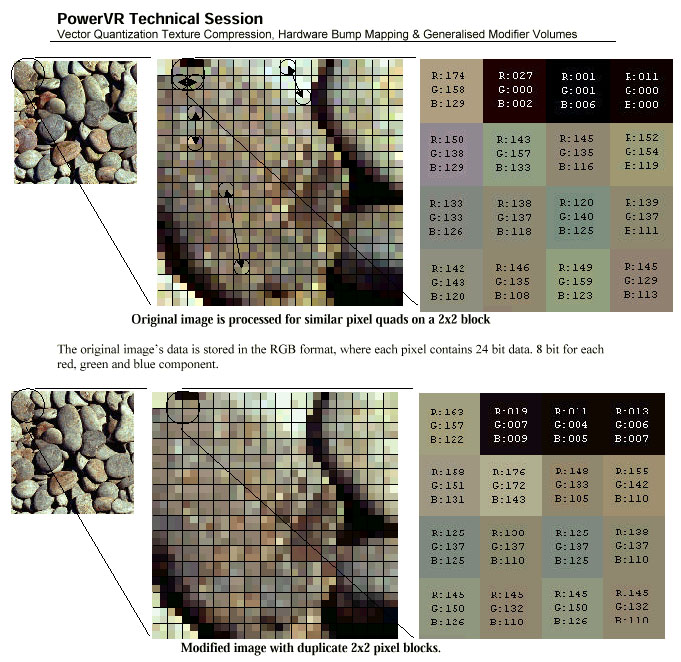VQTC
Info from a PowerVR Technical Session with Mark Butler and Marc Printer-Krainer (websites: PowerVr.com and VideoLogic.com):
Vector Quantization Texture Compression works somewhat different, but not much. VQ takes an image and makes a grid with blocks of 2*2 pixels. Each block will be compared to the other blocks to find similar copies. When VQ finds some 2*2 blocks that are almost the same, the blocks will be changed slightly to make them identical, so that we end up with more duplicate data. When you have duplicates, you only have to store one of the 2*2 blocks, and you end up with less data.

The picture above is how VQTC really works. You see exactly what I described. The first part is the dividing of the image in 2*2 blocks and the bottom part you see that some blocks are changed, to match others.
Now something about the compression factor, that is higher as you would
use S3TC. The compression ratio can be as high as 17:1. However the image
quality is not as good as S3TC. But from what I have seen it's good enough.
But as PowerSGL II supports VQTC, both PowerVR 250 and Dreamcast can use
it. The PowerVR 250 chip is used on the upcoming Neon 250 board by VideoLogic.
